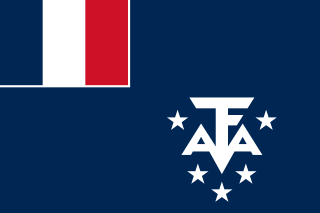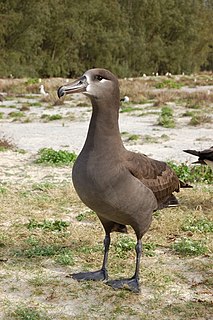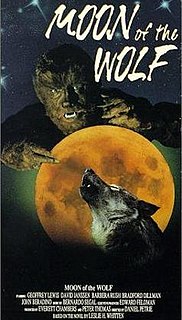
The organized environmental movement is represented by a wide range of non-governmental organizations or NGOs that seek to address environmental issues in the United States. They operate on local, national, and international scales. Environmental NGOs vary widely in political views and in the ways they seek to influence the environmental policy of the United States and other governments.

Midway Atoll is a 2.4 sq mi (6.2 km2) atoll in the North Pacific Ocean. Midway Atoll is an insular area of the United States and is an unorganized and unincorporated territory. The largest island is Sand Island, which has housing and an airstrip. Immediately to the east of Sand Island across the narrow Brooks Channel is Eastern Island, which is uninhabited and no longer has any facilities. Forming a rough, incomplete circle around the two main islands and creating Midway Lagoon is Spit Island, a narrow reef.

The environmental movement, also including conservation and green politics, is a diverse philosophical, social, and political movement for addressing environmental issues. Environmentalists advocate the just and sustainable management of resources and stewardship of the environment through changes in public policy and individual behaviour. In its recognition of humanity as a participant in ecosystems, the movement is centered on ecology, health, and human rights.

The Mare Island Naval Shipyard (MINSY) was the first United States Navy base established on the Pacific Ocean. It is located 25 miles (40 km) northeast of San Francisco in Vallejo, California. The Napa River goes through the Mare Island Strait and separates the peninsula shipyard from the main portion of the city of Vallejo. MINSY made a name for itself as the premier U.S. West Coast submarine port as well as serving as the controlling force in San Francisco Bay Area shipbuilding efforts during World War II.

Robert Duane Ballard is an American retired Navy officer and a professor of oceanography at the University of Rhode Island who is most noted for his work in underwater archaeology: maritime archaeology and archaeology of shipwrecks. He is best known for the discoveries of the wrecks of the RMS Titanic in 1985, the battleship Bismarck in 1989, and the aircraft carrier USS Yorktown in 1998. He discovered the wreck of John F. Kennedy's PT-109 in 2002 and visited Biuku Gasa and Eroni Kumana, who saved its crew. He leads ocean exploration on E/V Nautilus. Ballard considers his most important discovery to be that of hydrothermal vents.
Tourism in Puerto Rico attracted 3.7 million visitors in 2019 and 1.0 million visitors in 2015, a notable increase from the average of 2010–2014 at 3.1 million. Tourism has been a very important source of revenue for Puerto Rico for a number of decades given it is host to diverse natural wonders, cultural and historical buildings, concerts and sporting events. Visitors from the United States do not need a passport to enter Puerto Rico and the ease of travel attracts many tourists from the mainland United States each year.

The wandering albatross, snowy albatross, white-winged albatross or goonie is a large seabird from the family Diomedeidae, which has a circumpolar range in the Southern Ocean. It was the last species of albatross to be described, and was long considered the same species as the Tristan albatross and the Antipodean albatross. A few authors still consider them all subspecies of the same species. The SACC has a proposal on the table to split this species, and BirdLife International has already split it. Together with the Amsterdam albatross, it forms the wandering albatross species complex.

Bikini Atoll, sometimes known as Eschscholtz Atoll between the 1800s and 1946 is a coral reef in the Marshall Islands consisting of 23 islands surrounding a 229.4-square-mile (594.1 km2) central lagoon. After the Second World War, the atoll's inhabitants were forcibly relocated in 1946, after which the islands and lagoon were the site of 23 nuclear tests by the United States until 1958.

Bimini is the westernmost district of the Bahamas and comprises a chain of islands located about 80 kilometres (50 mi) due east of Miami. Bimini is the closest point in the Bahamas to the mainland United States and approximately 210 km (130 mi) west-northwest of Nassau. The population is 1,988 as of the 2010 census.

The Crozet Islands are a sub-Antarctic archipelago of small islands in the southern Indian Ocean. They form one of the five administrative districts of the French Southern and Antarctic Lands.

The black-footed albatross is a large seabird of the albatross family Diomedeidae from the North Pacific. All but 2.5% of the population is found among the Northwestern Hawaiian Islands. It is one of three species of albatross that range in the northern hemisphere, nesting on isolated tropical islands. Unlike many albatrosses, it is dark plumaged.

The Laysan albatross is a large seabird that ranges across the North Pacific. The Northwestern Hawaiian Islands are home to 99.7% of the population. This small gull-like albatross is the second-most common seabird in the Hawaiian Islands, with an estimated population of 1.18 million birds, and is currently expanding its range to new islands. The Laysan albatross was first described as Diomedea immutabilis by Lionel Walter Rothschild, in 1893, on the basis of a specimen from Laysan Island.

Plaza Suite is a comedy play by Neil Simon.

"...And Ladies of the Club" is a novel, written by Helen Hooven Santmyer, about a group of women in the fictional town of Waynesboro, Ohio who begin a women's literary club, which evolves through the years into a significant community service organization in the town.

The short-tailed albatross or Steller's albatross is a large rare seabird from the North Pacific. Although related to the other North Pacific albatrosses, it also exhibits behavioural and morphological links to the albatrosses of the Southern Ocean. It was described by the German naturalist Peter Simon Pallas from skins collected by Georg Wilhelm Steller. Once common, it was brought to the edge of extinction by the trade in feathers, but with protection efforts underway since the 1950s, the species is in the process of recovering with an increasing population trend. Its breeding range, however, remains small.

Albatrosses, of the biological family Diomedeidae, are large seabirds related to the procellariids, storm petrels, and diving petrels in the order Procellariiformes. They range widely in the Southern Ocean and the North Pacific. They are absent from the North Atlantic, although fossil remains show they once occurred there and occasional vagrants are found. Albatrosses are among the largest of flying birds, and species of the genus Diomedea have the longest wingspans of any extant birds, reaching up to 3.7 m (12 ft). The albatrosses are usually regarded as falling into four genera, but disagreement exists over the number of species.

Moon of the Wolf is an American TV movie broadcast on September 26, 1972 on ABC Movie of the Week. It stars David Janssen, Barbara Rush, Geoffrey Lewis and Bradford Dillman, with a script by Alvin Sapinsley. The film was directed by Daniel Petrie and filmed on location in Burnside, Louisiana. All of the downtown footage was from Clinton, Louisiana.
Bottom Live 3: Hooligan's Island is a live stage show that was recorded at the Bristol Hippodrome, Bristol, in 1997, written by and starring Rik Mayall and Adrian Edmondson. This is the third instalment of five live shows based on the television show Bottom.
Traveston Crossing Dam was a proposed water project that was initiated by the state government of Queensland, Australia, in 2006 as a result of a prolonged drought which saw South-East Queensland's dam catchment area receive record-low rain. The project was cancelled in November 2009, after being refused approval by federal Environment Minister Peter Garrett.

Megane is a 2007 Japanese comedy film written and directed by Naoko Ogigami. Set on an unnamed Japanese island, the film tells the story of a vacationing university professor who comes in contact with several eccentric local inhabitants. It serves as a follow-up to Ogigami's 2006 film Kamome Shokudo, and features two of the same actors. It was featured at several film festivals including the Sundance Film Festival. During production, Ogigami decided the title of the movie after an impromptu realization that all of the characters in the film wore glasses.
















